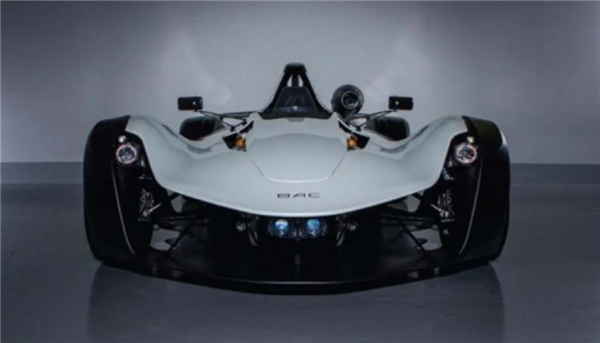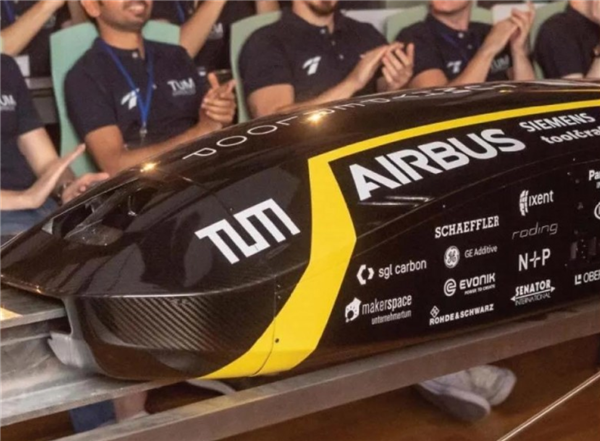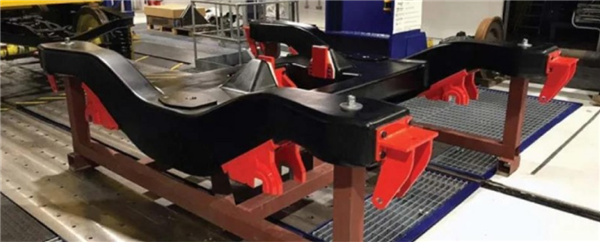28 Apr, 2020 By Johny 2 Comments
Inventory(4)–the hotspot of global advanced fiber composite research and development in year 2019
Europe:
Europe has brought together many prominent companies in the field of high-performance fibers and composite materials, such as the German SGL Group (SGL), the Belgian Solvay Group (Solvay), the Dutch Royal DSM Group (DSM), and the British National Composites Center ( NCC), German Aerospace Research Laboratory (DLR) and other scientific research institutes. In recent years, the trend of light weight has vigorously promoted the development of high-performance fiber composite materials in automotive engineering, aerospace, construction and other industries. In 2019, Europe conducted in-depth research on the application of high-performance fibers and composites in many fields such as automotive and marine applications.
On April 7, 2019, the British company Liverpool (BriggsAu? TomotiveCompany, BAC) officially launched the “MonoR” sports car (Figure 7). It is the world’s first mass-produced car that uses graphene-reinforced carbon fiber in every body panel “MonoR”. Graphene reinforces the structural characteristics of the fiber, making the panel stronger and lighter, with better machinery and Thermal performance also makes “MonoR” have higher performance.

In November 2019, the French Chomarat Group (Chomarat) developed carbon fiber reinforced materials for the cruiser 435 and 465 models of Arca Yachts, Sweden. In order to obtain better permeability during the irrigation process, Cho-marat deeply researched the best structure of high-performance C-PLYTM, and developed high-performance C-PLYTM carbon fiber non-crimp fabric (NCF), which makes it have Mechanical properties and compatibility with various resins, and can achieve better cost-effectiveness. Chomarat’s infusion technology for the hull and deck of cruisers incorporates up to 70% of carbon fiber into the laminate, which can bring structural design advantages, high-quality surface quality and reduced overall component costs.
The German SGL Group, as the world’s leading manufacturer of carbon graphite materials and related products, is the only European company that has a major share of the world carbon fiber market. In 2019, SGL is looking for more business development methods to expand the role of carbon fiber composite materials in more fields. On April 30, 2019, SGL cooperated with Shanghai Weilai Automobile Co., Ltd. (NIO) to jointly develop a prototype of a carbon fiber reinforced plastic battery case for electric vehicles. The battery case is 40% lighter than traditional aluminum or steel battery cases and has high rigidity And the thermal conductivity is 200 times lower than aluminum, which can better protect the battery body from the external cold and hot. In addition to this, the composite material also imparts excellent airtightness, waterproofness, and corrosion resistance to the battery case. ,
The Technical University of Munich (TUM) team has collaborated with experts from SGL to develop an optimization model for the capsule of a hyperloop train (Hyperloop) (Figure 8). The capsule structure weighs about 5.6 kg, which is about 10% lighter than the previous model of 6.1 kg. In addition, unlike the previous plastic solution, the outer shell lining of the transportation cabin is also completely made of carbon fiber material, reducing its weight from 1.5kg to only 0.7kg. The model won the championship for its R & D team at the speed of 463km / h in the 4th Hyperloop competition held on July 21, 2019.

As early as the Lisbon strategy formulated by the EU in 2000, sustainable development was implemented as an important policy. Today, in Europe, the concept of sustainable development has long been popular. In 2019, European companies have also made new achievements in the recycling of fiber composite materials. British ELGCarbonFibre is a company that realizes the commercial operation of recycled carbon fiber. It has the world’s first and largest carbon fiber recycling plant in the world. On December 4, 2019, ELG assisted the Ineos team to participate in the America ’s Cup regatta, using the waste generated during the manufacture of the racing boat to reprocess it into a non-woven carbon fiber felt, which was further used to make two fixed hulls. The transport bracket, this recycled material has good performance and can be directly used in the existing process, which fully shows that the carbon fiber composite material can be recycled and reused, reducing the environmental burden. On December 10, 2019, ELG and the University of Hud? Dlersfield ’s Institute for Railway Research (Huddersfield ’s Institute for Railway Research) jointly researched and released the world ’s first carbon fiber composite track bogie called “CAFIBO” (Figure 9). The new bogie is completely made of surplus and recycled carbon fiber materials, is lighter than conventional bogies, and has more excellent vertical and lateral stiffness. The use of this new bogie in railway vehicles can reduce track wear, reduce infrastructure maintenance costs, increase reliability and operational availability, and save energy and slow global warming.

In terms of basalt fiber, the “new blue ocean” of high-performance fiber materials, European companies have already begun to deploy related technologies and production capacity. Russia’s Anisoprint launched a new basalt fiber composite material (CBF) for continuous fiber 3D printing technology in June 2019. Parts printed with this material have 30 times the strength of plastic and 2 times that of aluminum. Also lighter. German LipexEngineeringGmbH company invested 50 million euros in Russia to start the establishment of a basalt fiber production line to meet the rapidly growing market demand for basalt fiber.
In the past few decades, in order to develop and manufacture materials that can be used in the size of ultra-stable structures for critical-sized devices in spacecraft, researchers have conducted extensive research and developed carbon fiber-reinforced polymer materials. However, dimensional instability due to the intrusion and release of moisture is still the basic weakness of the matrix, which limits many applications of composite materials. Silva and others from the University of Surrey in the United Kingdom have responded to this challenge by developing a spatially-definable physical surface barrier. This potential barrier is combined with the mechanical properties of the composite and becomes part of the composite itself. The resulting fiber-reinforced composite material has mechanical integrity and strength superior to the underlying composite material, while remaining impermeable to water and exhaust. In addition, European researchers have also achieved results in basic research on high-performance fibers. On December 13, 2019, the Greiner team of the Institute of Polymer Chemistry and Polymer Research at Bayreuth University in Germany published the research article “Highstrengthincombinationwithhightoughnessinrobustandsustainablepoly-mericmaterials” in “Science”, which improved the strength of man-made fiber materials by improving molecular crosslinking Conflicting with toughness, a multi-fiber PAN yarn was manufactured with a toughness of up to (137 ± 21) J / g and a tensile strength of (1236 ± 40) MPa.
Sourcing from cnfrp.com

